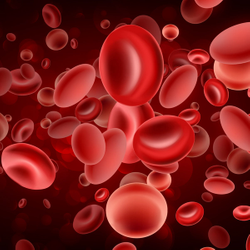Isa-KRd Produces 100% ORR in Small Newly Diagnosed Multiple Myeloma Cohort
Isatuximab plus carfilzomib, lenalidomide, and dexamethasone demonstrates durable responses in patients with newly diagnosed standard- and high-risk multiple myeloma.
At 24 months, the progression-free survival (PFS) rate was 91.3% (95% CI, 83.4%-99.8%) and overall survival (OS) was 95.8% (95% CI, 90.2%-100%).

Isatuximab (isa, Sarclisa) combined with carfilzomib (Kyprolis), lenalidomide (len; Revlimid), and dexamethasone (dex; isa-KRd) elicited an objective response rate (ORR) of 100% in patients with transplant-eligible, newly diagnosed multiple myeloma with or without stem cell transplant (SCT), according to data from the phase 2 SKylaRk trial (NCT04430894) presented during the 2023 American Society of Hematology (ASH) Annual Meeting and Exposition.
Among 45 patients evaluable for response after 4 treatment cycles, ORR was 100%, with 89% achieving VGPR or better and 36% achieving CR, and, of those, 43% being MRD-negative. Following C6/C8, the ORR, CR, and VGPR or better were 100%, 64%, and 96%, respectively, with 66% being MRD negative, said study co-author Elizabeth K. O’Donnell, MD, Director of Early Detection and Prevention at Dana-Farber Cancer Institute and an Assistant Professor of Medicine at Harvard Medical School, during a presentation of the study’s findings at ASH.
Isatuximab has been previously approved by the Food and Drug Administration (FDA) in combination with carfilzomib and dexamethasone, as well as in combination with pomalidomide and dexamethasone, for the treatment of adults with previously treated relapsed or refractory multiple myeloma.
At 24 months, the progression-free survival (PFS) rate was 91.3% (95% CI, 83.4%-99.8%) and overall survival (OS) was 95.8% (95% CI, 90.2%-100%).
Grade 3 or 4 adverse effects occurring in at least 2 patients included neutropenia (26%), elevated alanine aminotransferase (12%), acute kidney injury (4%), and thrombocytopenia (6%), while 20% of patients experienced grade 1 or 2 infusion-related reactions. Forty-nine percent of patients experienced grade 1 or 2 hypertension, while 1 patient each experienced grade 3 hypertension and a grade 3 myocardial infarction.
Two patients each withdrew from the study due to acute kidney injury and were not evaluable at C4 and C6/C8 because measurable disease could only be assessed by PET CT. There were two participant deaths, which O’Donnell said was assessed as being unrelated to treatment.
All participating patients were treated with 4 cycles of isa-KRd, followed by stem cell collection with the option of upfront or deferred SCT. SCT was deferred for 89% of patients, and those who received upfront SCT were treated with 2 additional cycles, then maintenance.
The study included 50 patients, with a median age of 59 (39-70) years, 54% of whom were male, and 46% of whom had high-risk cytogenetics, with a median follow-up of 26 months.
Regarding quality-of-life, researchers reported that participants experienced statistically significant within-patient improvements in: global health status ( p<.01); physical functioning ( p<.01); role functioning ( p<.01); emotional functioning ( p=.01); social functioning ( p<.01); body image ( p<.01); future perspective ( p<.01); fatigue ( p<.01); pain ( p<.01); loss of appetite ( p<.01), and symptoms ( p<.01).
There were no statistically significant changes in measurements of patients’ body composition between baseline and the completion of 4 cycles or consolidation/induction, and there was a significant improvement in total lean mass (p=0.01) between baseline and end of induction adjusted when for SCT status, the study found.
References
O'Donnell E, Mo C, Yee A, et al. A phase II study of isatuximab, once weekly carfilzomib, lenalidomide, dexamethasone, in newly diagnosed, transplant-eligible multiple myeloma (The SKylaRk Trial). Blood. 2023; 142 (Supplement 1): 4671. doi: https://doi.org/10.1182/blood-2023-181019
Newsletter
Stay up to date on recent advances in the multidisciplinary approach to cancer.